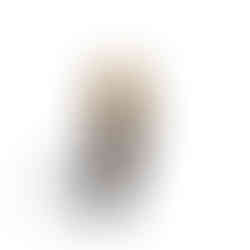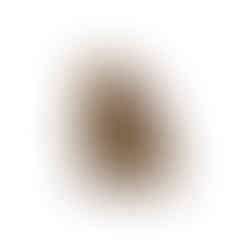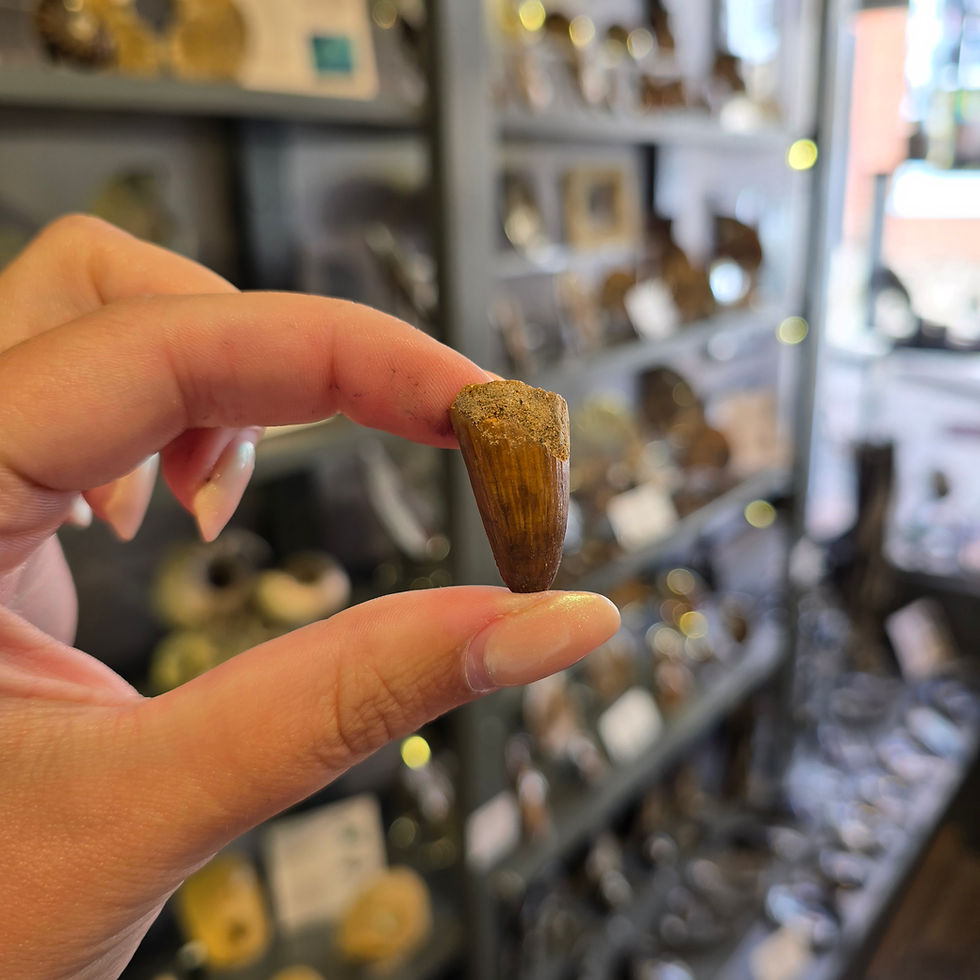Dinosaur Frame Information
- lapidartlincoln
- Jan 1, 2024
- 2 min read
Updated: Apr 8
Dinosaur Eggshell
This eggshell is from the Saltasaurus Dinosaur. This was a small, heavily armoured sauropod dinosaur that lived during the Late Cretaceous period, around 70 million years ago, in what is now Patagonia, Argentina. It was one of the first sauropods discovered with bony armour plates (osteoderms) embedded in its skin, providing protection from predators.
Growing to around 4-5 metres tall & 12 metres long, they were herbivores living on plants. They are named after the area in which the fossils are found, Salta Province, Argentina hence the Saltasaurus. They laid clutches of approximately 25 eggs in large communal hatching grounds, which have been found in this area.
Amber
Amber is fossilised tree sap that has spent millions of years fossilising. Amber comes in various yellow to dark orange hues, even red in rarer cases, it can be found in areas around the Baltic Sea, Indonesia & the Dominican Republic.
Bugs & insects were caught within the sticky tree sap before it began to fossilise, which gives us a real insight into the types of insects that were alive millions of years ago, without them being encased in amber there wouldn’t be many examples as its very difficult for soft tissue to fossilise.
Dinosaur Tooth
This tooth is from the Spinosaurus, this dinosaur was actually the longest therapod dinosaur, even longer than a famous T-Rex, growing up to 18 metres long and was tall as a male giraffe! These dinosaurs lived in what is now Morocco, Africa during the Cretaceous period around 93 to 112 million years ago.
It is now thought that the Spinosaurus actually developed its huge sail like fin to navigate when swimming, so not only was this terrifying dinosaur roaming the land you wouldn't be safe in the sea either! Its narrow skull and long conical teeth were well adapted for catching fish, and it was thought to live in swamp like environments, around river formations and along the coast in what is now North Africa.
Dinosaur Bone
This dinosaur bone fragment is from the Morrison Formation, USA. This is one of the most famous & fossil-rich rock formations in the world, particularly for Late Jurassic dinosaur fossils. It spans across the western United States including Colorado, Utah, Wyoming, Montana, South Dakota and more. The formation dates to around 155–148 million years ago.
The area was a mix of river floodplains, lakes & forests making it the perfect area for dinosaurs to evolve & live. Many well-known dinosaurs have been discovered here, including the Diplodocus, Brachiosaurus, Allosaurus & Stegosaurus. We are unable to tell exactly which dinosaur this bone is from due to size of the fragment.
Dinosaur Coprolite
Dinosaur coprolite is fossilized dinosaur poop! It provides valuable clues about the diet, digestion & environment of prehistoric creatures. Coprolites are rare compared to bone fossils because they had to be buried quickly to fossilize before decomposing.
Coprolites often contain bone fragments, plant material, scale, or even parasite remains, revealing what dinosaurs ate. Coprolites are like prehistoric "time capsules," giving us a direct look at dinosaur digestion and ancient food chains.



























Comments